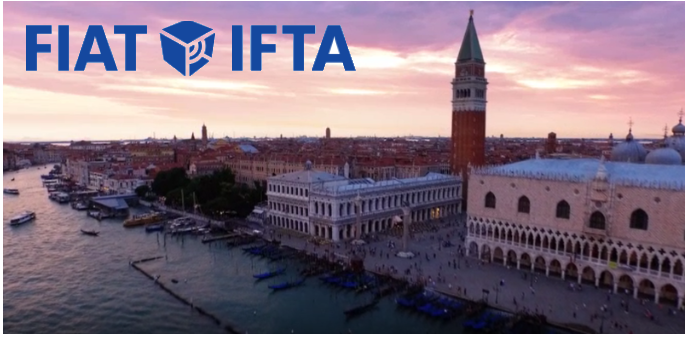CRITS and Teche presented RAI archive mass digitisation at FIAT/IFTA World Conference 2018
Venice, 9th October 2018
On October the 9th, at the FIAT/IFTA World Conference 2018 hosted by RAI in Palazzo Labia Venice, RAI CRITS and RAI Teche contributed to the Workshop “Mass Digitisation with a Focus on Film” with the presentation of “The experience of RAI DigiMaster Project, in progress…“
Prepared by Laurent Boch and Roberto Borgotallo (CRITS), and Giorgio Balocco and Gabriele Di Matteo (Teche), the work has been discussed by Laurent Boch.
The full presentation is available here
Abstract
RAI analogue archive is made of hundreds thousands magnetic tapes and about the same amount of films, mostly 16mm.
The risk of content loss is important, because the former depends on the obsolescence of the players and the latter are endangered by advance of vinegar syndrome.
Now digitisation is in progress, however it took more than expected to set up the project and make it working at reasonable speed. The completion of digitisation will require years and we cannot be sure to get it at 100% successful end.
The presentation explains the criteria adopted for taken decisions, keeping in consideration target of file formats, equipments and systems, workflows, automated/manual activities, together with current criticalities and remaining risks.
For Betacam tapes has been implemented a highly automated process. The most critical point is to keep players in good conditions of use as they are old and have never been used such intensively. Cleaning the tapes before playback is essential.
Regarding films, the troubles are to set up the preparation activity and to take the suitable decisions about preservation after digitisation. For a part of our collection this is the last “digitisation opportunity”, as films affected by vinegar syndrome at advanced stage are going to become unusable before another digitisation process, with a different technology, will be available.
In massive digitisation, speed is as crucial as quality, that may be already poor on the analog carrier. It’s ensured that our tapes/films can be put aside, as reasonably no better files could be obtained.
Eventually it is discussed how the evaluation of editorial interest and prioritisation can be taken into account, allocating more resources – for better results – on the items which are well known to be important. On one hand the broadcaster archive has to feed near future re-use, by current production and delivery systems, in formats suitable to immediate exploitation. On the other hand it also has to address longer time span, and keep the possibility to provide valuable content usable in unknown future technical scenarios.
